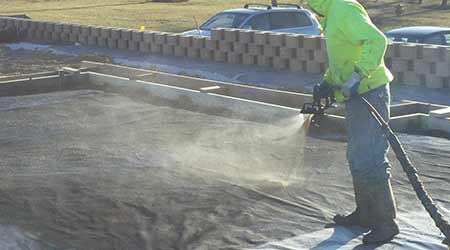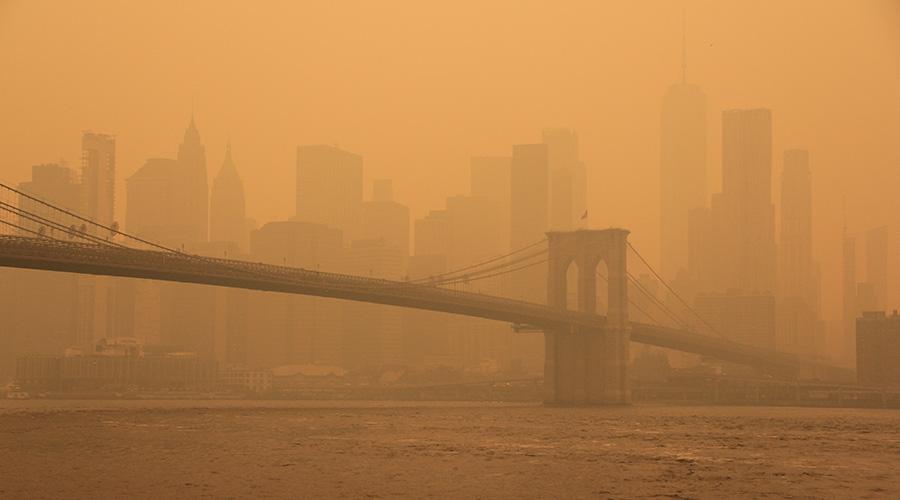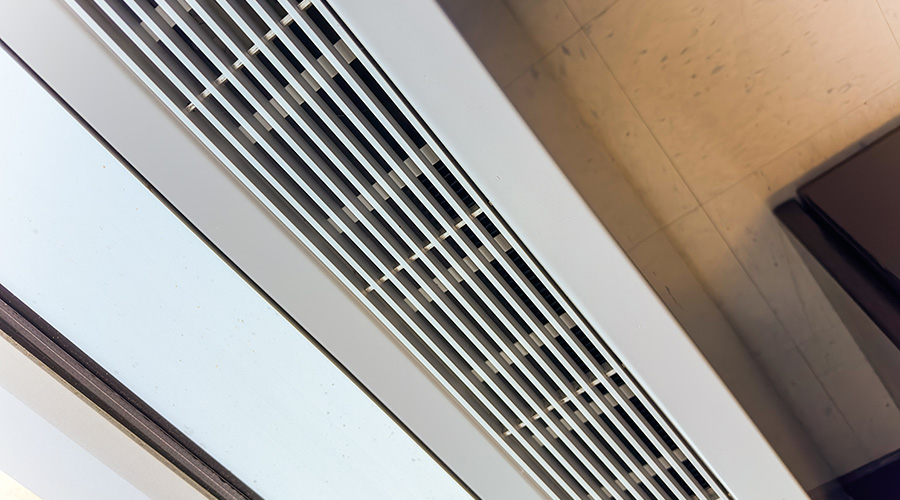 In a new construction project, chemical vapor barriers can be laid down underneath the foundation to block dangerous vapors from migrating into the habitable zone of the future building.
In a new construction project, chemical vapor barriers can be laid down underneath the foundation to block dangerous vapors from migrating into the habitable zone of the future building.Vapor Intrusion: What FMs Need to Know
Vapor intrusion is the migration of potentially harmful chemical vapors into a dwelling or occupied building from a subsurface source. This migration can lead to an accumulation of chemical-containing vapor. Evidence of toxic vapor intrusion is often found at various sites where manufactured chemicals such as petroleum hydrocarbons and chlorinated solvents are present in the groundwater, soil, or soil vapor. As vapor intrusion occurs, a building’s habitable indoor air quality is negatively affected and can lead to possible health risk. The types of chemicals which are major culprits in the concern of vapor intrusion are volatile organic compounds (e.g., trichloroethylene), petroleum hydrocarbons (e.g., gasoline), and semi-volatile organic compounds (e.g., naphthalene).
According to the United States Environmental Protection Agency, recognition of soil vapor intrusion to buildings and other enclosed spaces occurred in the 1980s with concerns over radon intrusion. There was an increasing awareness that man-made chemicals in soil, groundwater, and sewers could pose a threat to indoor air quality.
In addition to health risks that vapor intrusion poses, there are financial implications to this environmental condition as well. There are lawsuits on record of having been filed against various businesses for their dangerous air quality due to vapor intrusion. Class action lawsuits have been settled at upwards of $8 million in certain cases.
The source of a vapor intrusion risk is not always on the property being developed. Soil, groundwater, and soil vapor contamination can migrate a great distance, depending on soil characteristics, from the initial location of release onto adjacent properties as well as properties considerably down gradient. This movement of chemicals may result in a vapor intrusion risk below a proposed or existing structure without there having been any history of storage or use of these chemicals on the property at issue.
Solutions
From a new construction point of view, land assessments are continuing to become more thorough. Doing their due diligence on the history of the land and being sure to test for the presence of the volatile chemicals is becoming a standard operating procedure before finalizing plans on a new development. If it is determined that vapor intrusion is indeed a real potential risk for the site, architects are now specifying that something be done to mitigate this risk. This mitigation comes in the form of chemical vapor barriers, not to be confused with standard moisture barriers (too often referred to as vapor barriers). Chemical vapor barriers are being laid down underneath the foundation to block dangerous vapors from migrating into the habitable zone of the future building. Contractors are receiving the specifications of new projects that include a chemical vapor barriers on a more regular basis.
But what if there is a vapor intrusion risk in a facility that is already standing? Is there anything that can be done at this point? Fortunately, there are solutions for this type of situation.
There are chemical vapor-barrier products that are specifically designed for existing structures. Sealant materials are applied to the top of the slab as opposed to the bottom, as they would if the chemical vapor barrier were applied before the foundation is laid. Facility managers are finding this retroactive installation of a chemical vapor barrier attractive because it not only acts as a useful vapor mitigation system but it also doubles as a finished floor surface. Because it coats the floor, the system is always “on” and always working. Alternatively or in addition to the sealant product described above, is the installation of a depressurization system below the slab in order to provide a piped pathway leading chemical vapors away from the interior of a structure. These are known as sub-slab depressurization systems. Essentially, these systems act as a fan blowing out any contaminants. However, these systems do have to be continually powered, require a level of maintenance to ensure continued effectiveness, and require trenching below the slab and reconstruction of the slab to install.
It is important for a facility manager to understand if there are harmful chemical vapors migrating into an existing structure. After testing, if it is determined that there is a risk, the next step would be to consult a chemical vapor installation professional to do a site assessment and help determine the best course of action.
Wesley Robb is director of technical strategies and applications of Vapor Mitigation Strategies and has more than 23 years of environmental field and laboratory experience including several years of soil vapor sampling and analyses. He can be reached at wes@vapormitigationstrategies.com.
Related Topics:












